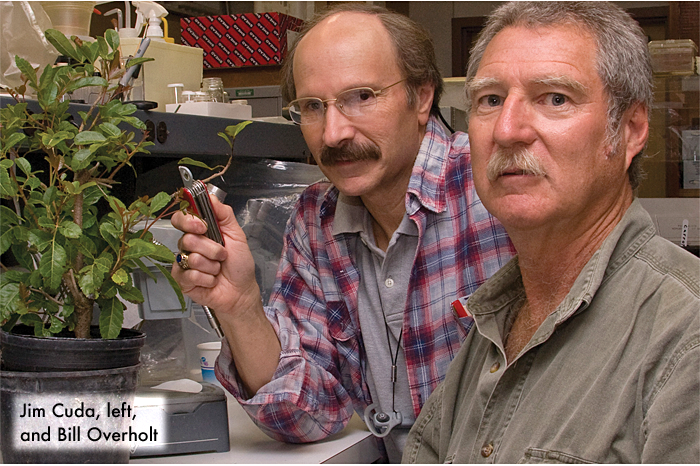UF/IFAS rebuilding research ranks with new funding
POLK, HILLSBOROUGH and surrounding Florida farmers and natural resource managers are about to reap a huge brain gain. In its recently passed budget, the state Legislature provided enough money to the University of Florida’s Institute of Food and Agricultural Sciences to hire more than 45 new faculty members.
It’ll provide for a nematologist at the Gulf Coast Research and Education Center in Wimauma, for example. That scientist will be charged with developing a nationally recognized program focused on combating parasites in the soil of tomatoes, strawberries, caladium, and other high-dollar-value plants.
It’s also how we’ll pay for a new tree physiologist at the Citrus Research and Education Center in Lake Alfred to join the fight against HLB. But the new scientists don’t have to be located in Wimauma or Lake Alfred to deliver results for local farmers. We’re taking a teamwork approach to our beefed-up roster of experts.
Though UF/IFAS will distribute the scientists around the state, we’re hiring them in teams to address particular issues: pest management, efficient land use, fruit and vegetable breeding, forest health, sustainable fisheries, and water quality and conservation. Why teams? The challenges of modern agriculture are too complex to be solved by a single discipline.
Take integrated pest management, for instance. Clearly, entomologists have to be key players in figuring out how to battle pests. You can’t stop insects just by attacking bugs directly, however.
Think of how we’re tackling citrus greening. While entomologists focus on the psyllid, engineers are steam treating trees, breeders are searching for HLB-tolerant rootstocks, economists are figuring out if growers can afford to keep their trees productive with more water and fertilizer, and microbiologists are taking on the bacteria that causes HLB.
So our pest management team may include crop systems scientists working on weed control, plant stress physiologists examining plants for signs of problems to come, and wildlife scientists focused on invasive animals. Those other scientists could be in Immokalee, Apopka, Ruskin, Belle Glade, Homestead, or Fort Lauderdale. In short, they can work on Polk/Hillsborough challenges from wherever they can have access to greenhouses, fields, data, grad students, labs, and staff support.
Hiring dozens of scientists at a time allows us to think big and organize into these teams. After years of just trying to hold the line, this year we’ll be able to do more for Polk and Hillsborough County growers.
To return to the pest management example, we’ll be bringing on a dozen new faculty across the state and in six different academic specialties. We’re arguably the state most vulnerable to newly arriving pests, with our 100 million annual visitors, our ports, and our subtropical climate. If we don’t get a handle on insects and the epidemiology of the diseases they carry, then they can wipe out all the production advances we make in other areas of agricultural research and technology. So we’ve got to continually improve our strategies to beat back bugs. This is all a way of saying that Polk and Hillsborough can benefit from dozens of new researchers, not just the ones who work closest to your fields, groves, and ranches.
The new infusion of expertise doesn’t make UF/IFAS pre-recession whole, but it helps us catch up on the backlog of the needs you and your commodity group leaders have expressed to us.
In fact, growers’ input was key in our decision-making about how to distribute geographically and by expertise the talent we’ll bring on in the next year to two years as a result of our “raise” from Tallahassee. The salaries of the new scientists is just the beginning of how we’ll increase the knowledge we generate to keep Florida agriculture strong. Part of the job of our scientists and support staff is to find non-state money to fund their work on agricultural problem-solving projects. In fact, the state supplies only about half of our budget. We go out and get the rest from other government agencies, grants and contracts, and private fundraising.
We spend it not just on people, but the right kind of people — those who work on teams. So, by working smarter, we can make your ag operation smarter.
CREDIT
article by JACK PAYNE
photo by UF/IFAS
ABOUT THE AUTHOR: Jack Payne is the University of Florida’s senior vice president for agriculture and natural resources and leader of the Institute of Food and Agricultural Sciences.
IN THE PHOTO: UF/IFAS faculty members Jim Cuda, left, and Bill Overholt, are shown. Overholt is an entomology professor at the quarantine research facility at the UF/IFAS Indian River Research and Education Center in Fort Pierce. The Florida Legislature’s final budget includes $180,000 more for the quarantine facility.

